Welcome to Discover All Things Garden – your ultimate guide to gardening. Whether you’re a seasoned pro or just starting out, this comprehensive resource is tailored to help you cultivate a beautiful and thriving garden. With tips and advice for designing, planting, decorating, and tending to gardens of all types, this guide will provide you with all the gardening essentials you need to succeed. From the basics of laying out a plot and preparing the soil to more advanced techniques like crop rotation and pest prevention, you’ll find everything you need to know to achieve the garden of your dreams.
Thanks to the expertise of the world’s leading online gardening community, gardenknowhow.com, this guide is jam-packed with easy-to-understand tips and colorful photos that will inspire and guide you in your gardening journey. Whether you’re looking to grow beautiful flowers, fresh fruits and vegetables, or flavorful herbs, this ultimate guide has got you covered. With a focus on organic and urban gardening techniques, you’ll learn how to grow your own fresh and nutritious produce right in your own backyard or windowsill.
Key Takeaways
- Discover All Things Garden is a comprehensive resource for gardening tips and advice.
- The guide covers all aspects of gardening, from designing and planting to decorating and tending to your garden.
- Gardenknowhow.com provides expert advice and easy-to-understand tips for gardeners of all levels.
- The guide covers various gardening topics, including flowers, fruits and vegetables, herbs, shrubs, houseplants, and garden decor.
- Whether you’re a beginner or an experienced gardener, Discover All Things Garden has everything you need to cultivate a beautiful and thriving garden.
Designing Your Dream Garden
When it comes to designing your dream garden, the possibilities are endless. Whether you prefer a contemporary look or a more traditional aesthetic, there are plenty of garden design ideas to inspire you. In this section, we’ll cover the essentials and highlight the best gardening supplies to bring your vision to life.
One approach to consider is square foot gardening, which involves growing crops in carefully measured gardening beds. This method incorporates polyculture planting, vertical gardening, crop rotation, and intensive spacing, allowing you to make the most of limited space. Square foot gardening reduces the need for time-consuming tasks like tilling and weeding, and it also minimizes water usage. If you’re new to gardening, square foot gardening is beginner-friendly and offers an easy way to get started.
When it comes to designing the layout of your garden, consider elements such as pathways, seating areas, and water features. These additions can create a sense of flow and relaxation in your outdoor space. You can also experiment with different textures and colors of plants to create a visually appealing and cohesive design.
In terms of supplies, make sure to invest in quality gardening tools, including a spade, rake, and pruning shears. A wheelbarrow or garden cart can also be helpful for transporting soil and plants. Additionally, consider adding raised garden beds to your space, as they provide better drainage and prevent soil compaction.
For more comprehensive resources on garden design, check out the book “Ultimate Gardening.” This guide provides tips on layout, soil preparation, crop rotation, and more. With the right planning and resources, you can design and maintain a garden that becomes a lifelong passion.
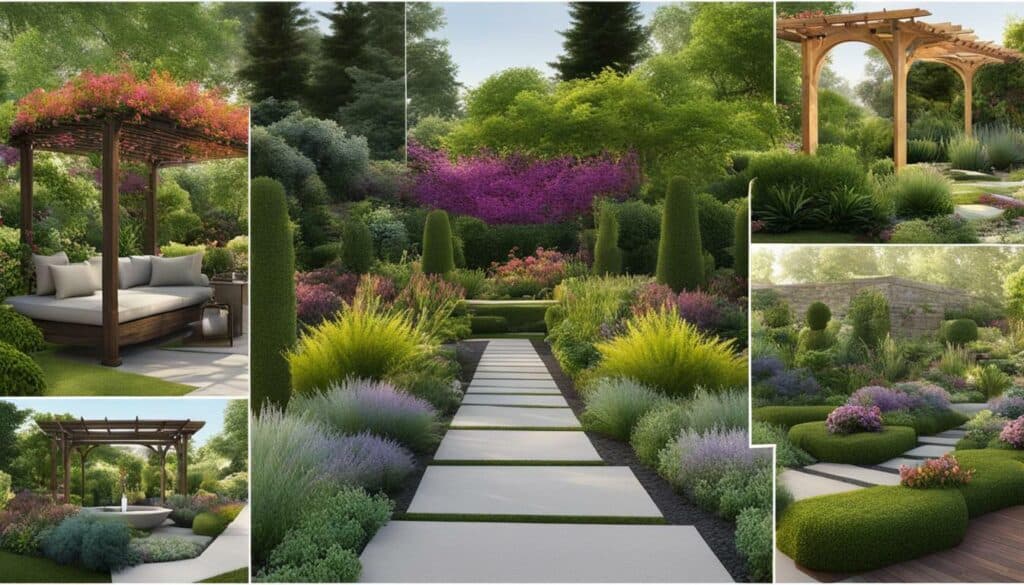
Planting and Tending to Your Garden
Planting and tending to your garden is a rewarding experience that requires careful attention and nurturing. Whether you have a spacious backyard or a tiny urban balcony, this section will provide you with the knowledge and techniques needed for successful gardening. We’ll explore the benefits of organic gardening and share tips for urban dwellers who want to create their own green oasis.
One popular method for gardening in small spaces is square foot gardening. This approach, coined and developed by civil engineer Mel Bartholomew, utilizes raised beds divided into one-foot squares to maximize space and minimize work. It incorporates polyculture planting, vertical gardening, crop rotation, intensive spacing, and no-till methods. Square foot gardening reduces the need for space, eliminates tilling and fertilizing, and minimizes the use of pesticides or herbicides. Additionally, watering is only provided to individual plants as needed. This method is suitable for small spaces but can be applied to larger areas as well.
If you’re looking for comprehensive guidance on gardening, “Ultimate Gardening” is a great resource. It provides practical advice for designing, planting, decorating, and maintaining any type of garden. It covers topics such as plot layout, soil preparation, crop rotation, weed and pest control, and caring for flowers, fruits, vegetables, herbs, shrubs, and houseplants. This resource offers easy-to-understand tips and colorful photos, making it ideal for both beginners and seasoned gardeners alike.
Organic gardening is another approach that offers numerous benefits. By avoiding the use of synthetic fertilizers and pesticides, organic gardening reduces chemical exposure and promotes a healthier environment. It also produces nutrient-rich produce that is free from harmful residues. Urban gardening is a great way to practice organic gardening in a limited space. With container gardening, vertical gardening, and community gardens, urban dwellers can grow fresh produce right in their own homes or neighborhoods.
By utilizing methods like square foot gardening and organic gardening, planting and tending to your garden can become a lifelong passion. With the right knowledge and techniques, anyone can create a beautiful and thriving outdoor space.
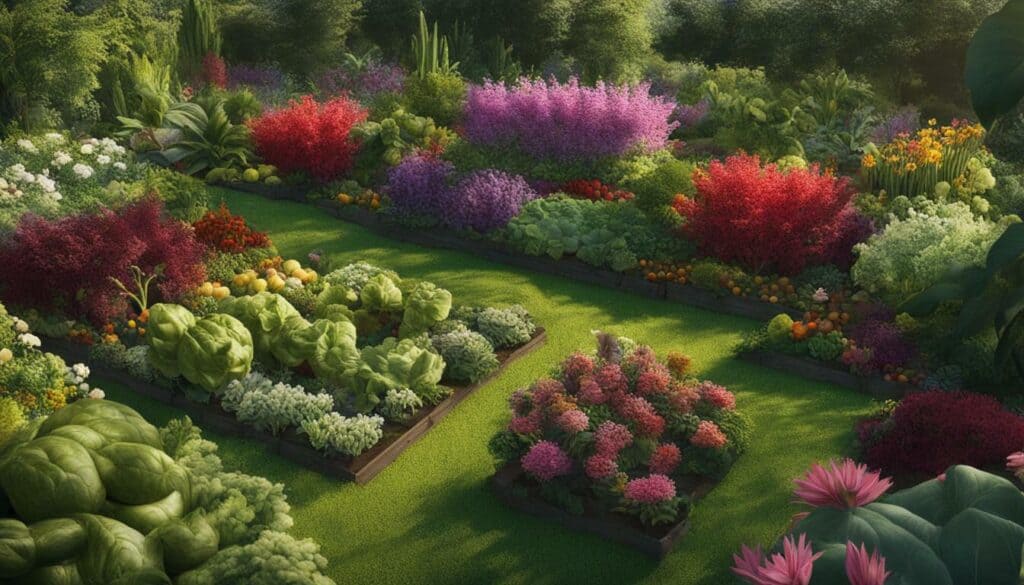
Growing Beautiful Flowers
There’s nothing quite like the beauty of a garden filled with blooming flowers. In this section, we’ll explore different flower garden ideas and discuss the best gardening supplies to help you create vibrant and picturesque flower beds.
One method for growing beautiful flowers is square foot gardening. Developed by civil engineer Mel Bartholomew, this method involves growing crops in carefully measured gardening beds, using only 20 percent of the space required in traditional row planting. This not only saves space but also reduces work and minimizes the need for weed control and fertilizers. Square foot gardening can be used not only for growing fresh produce but also for growing cut flowers or gardens for butterflies and other beneficial insects.
To implement square foot gardening or explore other resources for growing beautiful flowers, “Ultimate Gardening” is a comprehensive and practical resource, providing tips and advice on designing, planting, decorating, and tending to any type of garden. This guide covers every aspect of gardening, with dedicated chapters on flowers, fruits and vegetables, herbs, shrubs, houseplants, and garden decor.
When it comes to choosing gardening supplies for your flower garden, make sure you have the essentials, such as a trowel, pruners, gloves, and a watering can or hose. Consider adding a trellis or other support structures to train your flowers to grow up rather than out, creating a vertical visual interest in your garden. A good quality soil mix and fertilizer will also help your flowers thrive.
No matter what approach you choose, the goal of growing beautiful flowers can be achieved with the right techniques, dedication, and care.
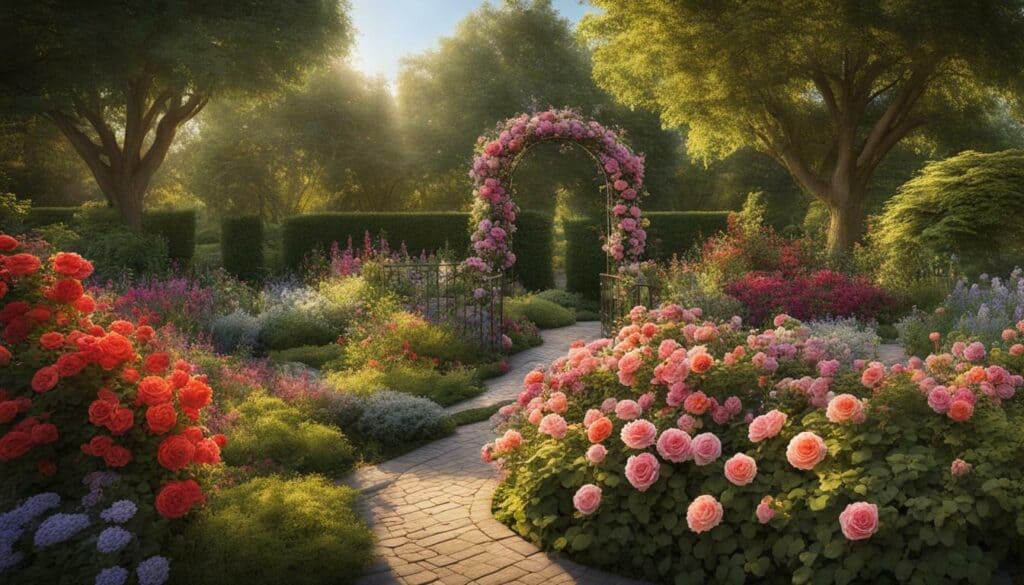
Growing Your Own Fruits and Vegetables
Imagine the satisfaction of growing your own delicious fruits and vegetables right in your backyard. In this section, we’ll explore the joys of vegetable gardening and share tips on how to create a sustainable and bountiful harvest using organic gardening practices. One popular approach to vegetable gardening is square foot gardening, which involves growing crops in carefully measured gardening beds.
Square foot gardening is an efficient and low-maintenance method that incorporates polyculture planting, vertical gardening, crop rotation, and intensive spacing. By using this technique, you can grow more food in less space while reducing the need for tilling, fertilizing, and weed control. It’s a beginner-friendly approach that can be done in small spaces, making it accessible for anyone interested in growing their own food.
Aside from square foot gardening, there are other organic gardening techniques you can use to enhance the health and sustainability of your garden. These include using compost and natural fertilizers, practicing companion planting, and attracting beneficial insects and pollinators.
When it comes to vegetable gardening, there are plenty of resources available to help you get started and succeed. Books, online communities, and local gardening groups can provide guidance and support for every step of the process. By acquiring the right knowledge and tools, you can design, plant, decorate, and tend to your own garden, whether it’s in your backyard, on a windowsill, or even in a public space.
Growing your own fruits and vegetables isn’t just a fun and rewarding activity – it’s also a sustainable and healthy way to nourish your body and protect the environment. By using organic gardening practices and embracing the power of nature, you can enjoy a lifelong passion for gardening while also making a positive impact on the planet.
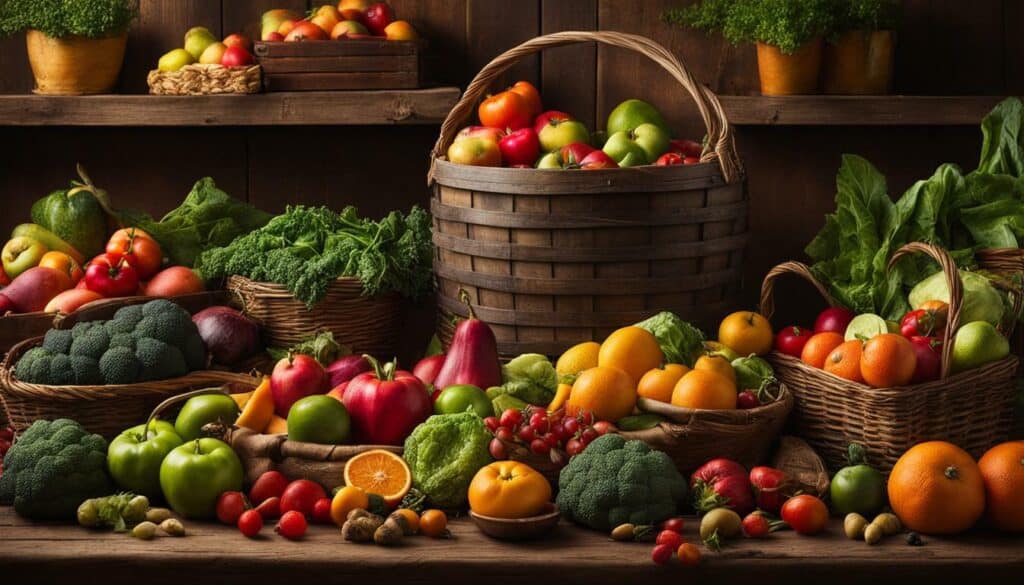
Start your vegetable gardening journey today and discover the joys of growing your own organic produce!
Cultivating a Thriving Herb Garden
A fragrant herb garden is a delightful addition to any garden or kitchen. In this section, we’ll delve into the world of herb gardening and provide tips on how to cultivate a thriving herb garden. We’ll also explore the various uses and benefits of herbs in cooking, teas, and home remedies.
When it comes to herb gardening, there are various methods and approaches to consider. One popular method is square foot gardening. This involves growing herbs (and other plants) in carefully measured one-foot increments, using raised beds and a grid system. The benefit of this approach is that it incorporates polyculture planting, vertical gardening, crop rotation, and intensive spacing, which reduces the need for space and work. It also eliminates the use of pesticides or herbicides and encourages irrigation only to individual plants as needed. Square foot gardening is suitable for those with small spaces and can be used to grow not only herbs but also fresh produce, cut flowers, and gardens for butterflies and beneficial insects.
The concept of square foot gardening was developed by Mel Bartholomew, a civil engineer who sought to find a more efficient and effective way for backyard gardeners to grow food. Bartholomew’s book, “Square Foot Gardening,” has become a go-to resource for gardeners interested in this method. It has since been updated and expanded, with new editions released by the Square Foot Gardening Foundation.
Regardless of the method you choose, cultivating a thriving herb garden requires careful planning and proper soil preparation. One of the most important factors to consider is sunlight. Most herbs require at least six hours of direct sunlight per day. The soil should also be well-drained and rich in organic matter. You can improve soil quality by adding compost or aged manure.
It’s also important to choose the right location for your herb garden. Herbs can be grown in containers, raised beds, or in-ground gardens. If you’re growing herbs in containers, make sure they have good drainage and are large enough to accommodate the root system. Raised beds are a good option for those with limited space or poor soil quality. In-ground gardens are ideal for those with larger spaces and good soil quality.
Once you’ve chosen your method and location, it’s time to start planting. Herbs can be grown from seed or purchased as transplants. Be sure to follow the planting instructions for the specific herbs you choose. Some herbs, such as basil and parsley, prefer moist soil, while others, such as thyme and rosemary, prefer drier soil. It’s also important to space your plants properly. Most herbs require at least 12 inches of space between plants.
Careful attention to your herb garden is key to its success. Water your herbs regularly, being careful not to overwater. Herbs grown in containers may require more frequent watering than those in the ground. Fertilize your herbs with a balanced organic fertilizer every few weeks, and be sure to remove any weeds that pop up. Regular pruning will also keep your herbs healthy and encourage new growth.
In addition to their culinary uses, herbs have many other benefits. They can be used to make teas, essential oils, and home remedies. For example, chamomile tea can help promote relaxation and sleep, while peppermint tea can soothe an upset stomach. Lavender essential oil can be used to promote relaxation and reduce stress, while tea tree oil has antiseptic properties.
Cultivating a thriving herb garden is a rewarding and enjoyable experience. By following expert advice and tips, gardeners can create a beautiful and productive herb garden that will provide fresh flavors and aromatic scents for years to come.
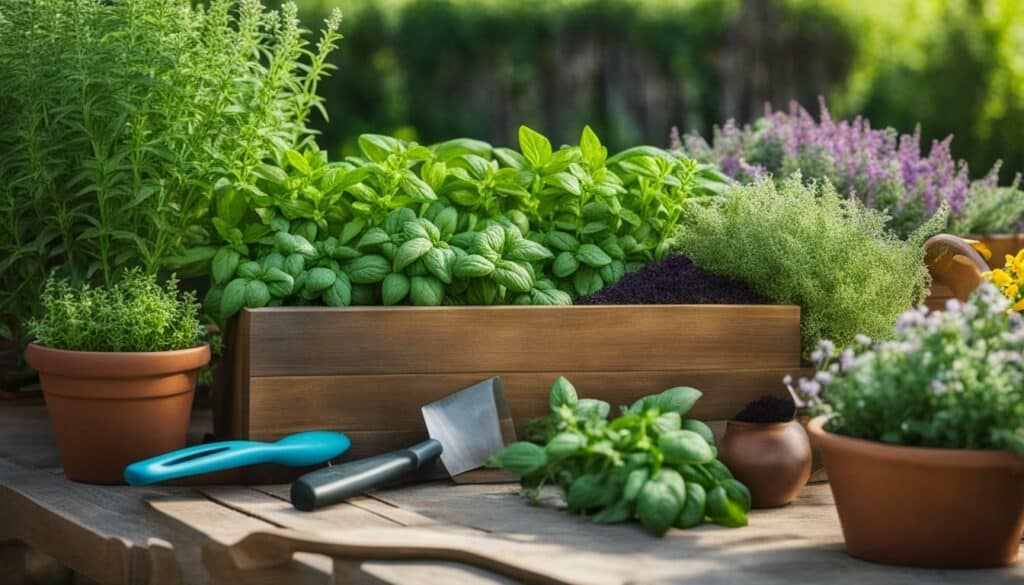
Enhancing Your Garden with Shrubs and Trees
Shrubs and trees are the backbone of any garden, providing structure, shade, and privacy. In this section, we’ll discuss the different types of shrubs and trees suitable for various garden styles and climates, and offer tips on how to incorporate them effectively into your garden design.
One of the keys to successful shrub and tree planting is choosing the right species for your climate, soil, and sun exposure. For example, if you live in a hot, dry area, drought-tolerant shrubs like lavender, sage, and Russian sage are great choices. In colder climates, evergreens like spruce and cedar can provide year-round color and texture.
Gardening supplies are also important when it comes to enhancing your garden with shrubs and trees. Good quality soil, mulch, and fertilizer can make a big difference in the health and growth of your plants. Consider investing in a drip irrigation system or soaker hose to ensure consistent watering without wasting water.
Kathleen Norris Brenzel’s Expertise
Kathleen Norris Brenzel, a former garden editor of Sunset Magazine and Books, is an expert in the field of shrubs and trees. She has written several books on gardening, including “Sunset Western Garden Book of Trees and Shrubs,” and has shared her tips at garden shows and on popular TV shows.
Another resource to help enhance your garden is Mel Bartholomew’s “Square Foot Gardening” method. This approach involves growing crops in carefully measured gardening beds, using only 20 percent of the space required in traditional row planting. It incorporates polyculture planting, vertical gardening, crop rotation, and intensive spacing. Square foot gardening not only reduces the need for space but also minimizes work.
If you’re looking for comprehensive and practical advice on designing, planting, and tending to any type of garden, “Ultimate Gardening” is a great resource. With colorful photos and easy-to-understand tips, this book covers all aspects of gardening, including laying out a plot, preparing soil, rotating crops, and dealing with weeds and pests.
In conclusion, enhancing your garden with shrubs and trees can be achieved through various methods such as choosing the right species for your climate and soil, investing in gardening supplies, and utilizing informative resources like Kathleen Norris Brenzel’s books and “Ultimate Gardening.” With these tips, you can create a beautiful and thriving garden that will be a lifelong passion.
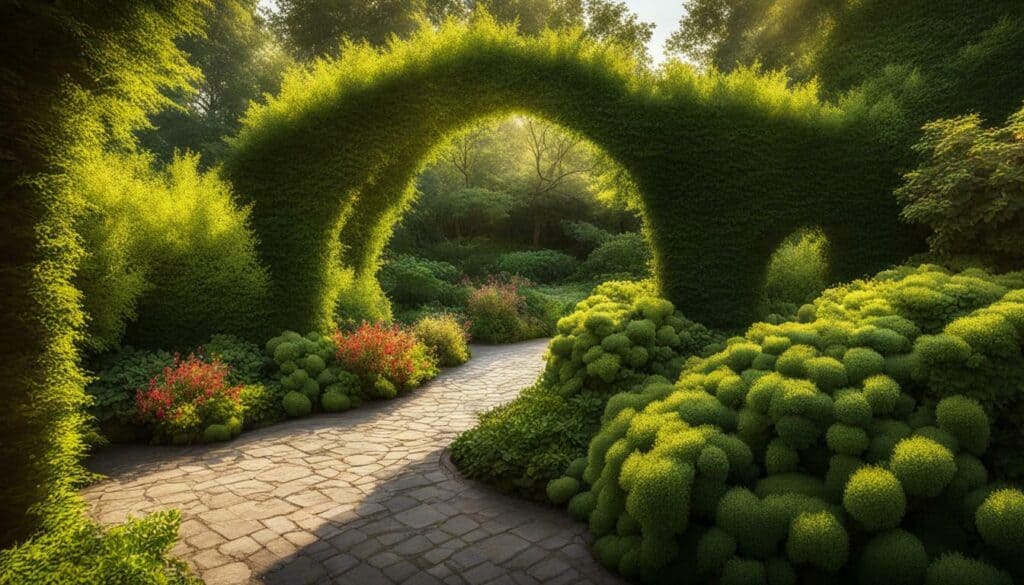
Indoor Gardening – Bringing Nature Inside
Even if you don’t have outdoor space, you can still enjoy the benefits of gardening by creating an indoor oasis. In this section, we’ll explore the world of houseplants and indoor gardening, providing tips on choosing the right plants, creating suitable environments, and ensuring their proper care.
Indoor gardening is a popular trend that allows individuals to bring nature inside their homes. This method involves growing plants indoors, usually in containers or small pots. It offers numerous benefits, such as improving air quality, creating aesthetic appeal, and providing a sense of tranquility.
Square foot gardening is a specific approach to indoor gardening that involves growing crops in raised beds in one-foot increments. This method is space-saving, reduces work, and allows for intensive spacing and crop rotation. It originated from the concept developed by civil engineer Mel Bartholomew and has gained popularity among backyard gardeners. It is beginner-friendly and requires minimal space, making it suitable for people with limited gardening experience or small living spaces.
When choosing plants for your indoor garden, it’s important to consider factors such as lighting, temperature, and humidity. Some popular houseplants include spider plants, pothos, and snake plants, which are easy to care for and can thrive in a variety of environments. Gardening supplies such as grow lights, humidifiers, and moisture meters can also help ensure proper plant care.
Proper care for houseplants includes watering them regularly, ensuring they have enough sunlight, and providing them with the right nutrients. It’s also important to monitor for pests and diseases, which can quickly spread in indoor environments. With the right care, houseplants can provide endless beauty and enjoyment in your living space.
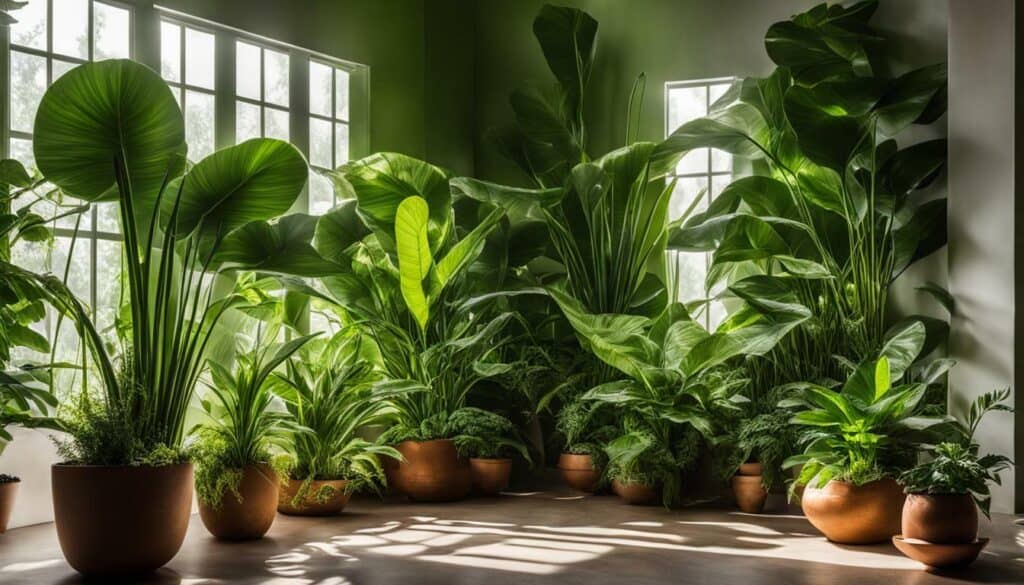
Overall, indoor gardening is a rewarding and accessible way to bring the beauty of nature into living spaces. Whether you’re a seasoned gardener or new to the world of plants, Ultimate Gardening provides helpful tips and guidance for creating a thriving indoor garden.
Adding a Touch of Style with Garden Decor
A well-designed garden is not complete without the right garden decor to add that finishing touch. In this section, we’ll explore various garden decor options, from outdoor furniture and lighting to ornaments and water features, helping you transform your garden into a stylish and inviting haven.
When it comes to garden decor, the possibilities are endless. You can incorporate outdoor furniture such as benches, tables, and chairs, to create a comfortable seating area where you can relax and enjoy your garden. Adding cushions, throws, and blankets can make your outdoor space more inviting and cozy, especially during colder seasons.
Lighting is another important aspect of garden decor. String lights, lanterns, and candles can create a warm and welcoming atmosphere in your garden, perfect for entertaining guests or enjoying a quiet evening outdoors. Solar-powered lighting options are also eco-friendly and cost-effective.
Ornaments and statues can add a unique and personal touch to your garden decor. Whether it’s a whimsical gnome or an elegant fountain, these decorative elements can reflect your personality and style and make your garden stand out.
Water features such as ponds, fountains, and waterfalls can not only add an aesthetically pleasing element to your garden but can also create a relaxing ambiance with the soothing sounds of flowing water. They can also attract wildlife, such as birds and butterflies, to your garden.
When selecting garden decor, it’s important to consider the overall aesthetic of your garden and choose elements that complement it. Whether you opt for a traditional or modern style, the key is to create a cohesive and visually appealing space that reflects your personality and style.

So, whether you choose to incorporate outdoor furniture, lighting, ornaments, or water features, adding a touch of style to your garden decor can transform your outdoor space into a stylish and inviting haven.
Conclusion
Congratulations! You have completed your journey through Discover All Things Garden – Your Ultimate Guide to Gardening. We hope this comprehensive resource has provided you with valuable insights, tips, and inspiration to create and maintain a beautiful and thriving garden. Whether you’re a beginner or an experienced gardener, remember that gardening is a continuous learning process, and each season brings new opportunities to grow and nurture your green thumb.
Square foot gardening is a popular method that allows for efficient and space-saving food growing. Coined by civil engineer Mel Bartholomew, this approach involves growing crops in carefully measured one-foot by one-foot squares, using polyculture planting, vertical gardening, crop rotation, and intensive spacing.
It reduces the need for space and minimizes work, as it uses a weed-free growing medium and encourages full occupancy of beds to prevent weed growth. Compared to traditional row growing, square foot gardening eliminates the need for tilling, fertilizing, and the use of pesticides or herbicides. It is a beginner-friendly method that requires minimal space and is suitable for those who want to grow food in small spaces. Additionally, square foot gardening can be used to grow cut flowers or gardens for beneficial insects.
The method was developed by Mel Bartholomew, who authored the book “Square Foot Gardening” in 1981. The book’s success led to a TV series and subsequent editions. The Square Foot Gardening Foundation continues Bartholomew’s work and released a third edition of the book in 2018. Overall, square foot gardening offers numerous advantages, making it an appealing choice for both beginners and experienced gardeners.
Thank you for joining us in this gardening adventure. Happy gardening!
FAQ
Q: What is Discover All Things Garden – Your Ultimate Guide to Gardening?
A: Discover All Things Garden – Your Ultimate Guide to Gardening is a comprehensive resource that covers all aspects of gardening, providing essential tips and information for designing, planting, decorating, and tending to any type of garden.
Q: Who is this guide suitable for?
A: This guide is suitable for both beginners and experienced gardeners who want to expand their skills. Whether you have a backyard garden, a windowsill garden, or a rooftop garden, Ultimate Gardening has the information you need to create and maintain a beautiful and thriving garden.
Q: What topics are covered in this guide?
A: Ultimate Gardening covers a wide range of topics including garden design, planting and tending techniques, flower gardening, growing fruits and vegetables, cultivating herbs, using shrubs and trees, indoor gardening, and garden decor.
Q: Are there practical tips and visuals included in this guide?
A: Yes, Ultimate Gardening provides practical tips on laying out a plot, preparing the soil, rotating crops, dealing with weeds and pests, and much more. The guide is also filled with colorful photos to help illustrate the concepts and inspire your gardening endeavors.
Q: Is there a specific focus on organic gardening?
A: Yes, Ultimate Gardening explores organic gardening techniques and highlights the benefits of growing your own fresh and nutritious fruits, vegetables, and herbs.
Q: Can I find tips and ideas for indoor gardening?
A: Absolutely! Ultimate Gardening includes a dedicated section on indoor gardening, providing tips for caring for houseplants and creating a thriving indoor garden.
Q: How does the guide emphasize the importance of garden decor?
A: The guide concludes with a section on garden decor, highlighting how adding unique and personalized touches can enhance the overall beauty and ambiance of your outdoor space.
What are Some Essential Things I Need to Start a Garden Today?
If you want to start your garden today, there are a few essential things you’ll need. First, find a sunny spot with good soil and access to water. Next, gather gardening tools like a shovel, rake, and gloves. Then, choose seeds or plants that suit your climate and preferences. Lastly, don’t forget to plan and maintain your garden regularly for optimal growth and enjoyment.
Source Links
- https://gardenerspath.com/how-to/design/guide-to-square-foot-gardening/
- https://www.amazon.com/New-Western-Garden-Book-Gardening/dp/0376039205
- https://www.target.com/p/ultimate-gardening-by-gardening-know-how-paperback/-/A-89392685
- https://www.amazon.com/Ultimate-Guide-Gardening-Vegetable-Yourself/dp/1623706491
- https://www.almanac.com/vegetable-gardening-for-beginners
- https://www.amazon.com/Complete-Gardeners-Guide-One-Stop-Garden/dp/1465499407
- https://www.gardeningknowhow.com/garden-how-to/design/lideas/designing-the-perfect-garden.htm
- https://www.gardendesignstories.com/
- https://www.gardendesign.com/pdf/how-to-design-your-dream-garden.pdf
- https://extension.uga.edu/programs-services/school-garden-resources/tending-your-garden.html
- https://www.bhg.com/gardening/yard/garden-care/ten-steps-to-beginning-a-garden/
- https://www.gardeners.com/how-to-folder/planting-and-care/tending-your-garden
- https://www.gardendesign.com/flowers/easy.html
- https://www.thespruce.com/how-to-grow-an-amazing-flower-garden-4118357
- https://www.trees.com/gardening-and-landscaping/most-beautiful-flowers
- https://www.countryliving.com/uk/homes-interiors/gardens/g31924172/what-need-grow-fruit-veg-home-tools/
- https://www.daviddomoney.com/beginners-guide-to-growing-fruit-and-veg/
- https://www.yardbarker.com/lifestyle/articles/20_tips_for_growing_a_thriving_herb_garden/s1__38937070
- https://www.cavalierdaily.com/article/2023/05/a-foodies-guide-to-cultivating-an-herb-garden
- https://www.epicurious.com/expert-advice/how-to-have-a-thriving-kitchen-herb-garden-article
- https://spottsgardens.com/make-garden-better-improve-yard-native-plants-pollinators/
- https://www.finegardening.com/article/design-a-garden-with-shrubs
- https://www.bhg.com/gardening/plans/easy/corner-garden-plan-of-shrubs/
- https://www.amazon.com/Garden-Room-Bringing-Nature-Indoors/dp/0609802828
- https://www.washingtonpost.com/home/2023/06/02/how-to-outdoors-nature-home/
- https://www.trendependent.com/blog/bringing-nature-inside
- https://ginghamgardens.com/garden-decor-garden-art/
- https://ginghamgardens.com/upcycled-vintage-garden-decor/
- https://robynsfrenchnest.com/home/how-to-use-vintage-garden-decor-ideas-indoors/
- https://www.gardenstew.com/blog/e5463-15-art-and-garden-walk-conclusion.html
- https://thebikinggardener.com/2021/02/02/amazing-annuals-in-conclusion/
- http://lizfabry.blogspot.com/2012/11/garden-update.html?m=1





Leave a Reply